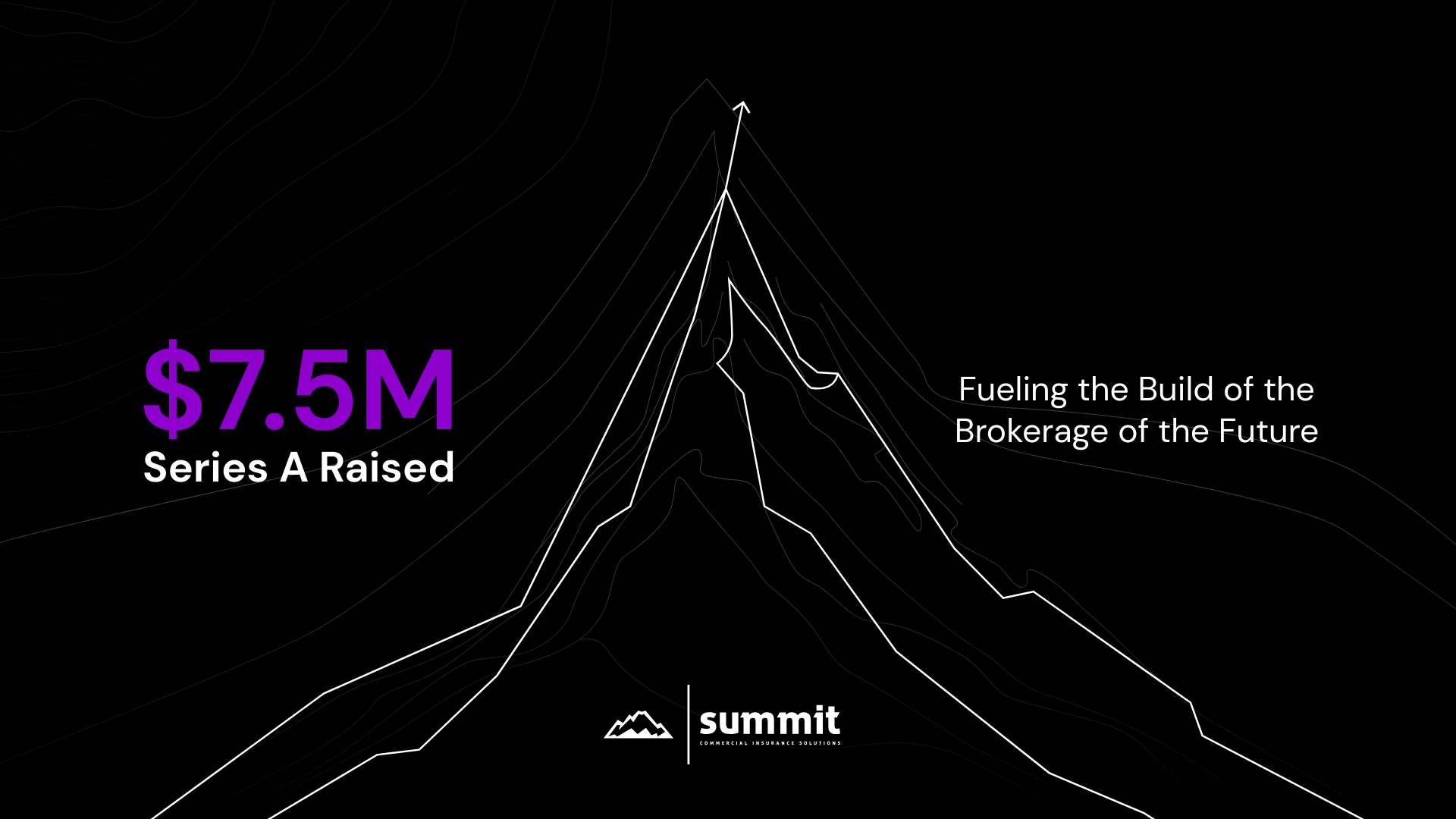.png)
How Business Insurance Safeguards Canadian Small Businesses Today
Canadian small businesses operate in a wide range of industries, from retail and hospitality to construction and professional services. Each faces its own set of risks that can lead to financial stress or legal issues. Events like fires, equipment breakdowns, customer injuries, or cyber-attacks can interrupt operations and result in significant costs.
Business insurance plays a role in helping manage these risks. It is designed to reduce the financial impact of unforeseen events by covering specific losses or liabilities. For many small businesses, insurance is part of their overall risk management strategy.
According to the Insurance Bureau of Canada, nearly 25% of Canadian small businesses are underinsured. This means that in the event of a major loss, they may not have enough coverage to recover fully. Without adequate insurance, even a single incident can lead to long-term financial strain or permanent closure.
Why Canadian Small Businesses Need Comprehensive Insurance
Business insurance protects Canadian small businesses by providing financial safeguards against common risks that could otherwise lead to bankruptcy. For instance, a slip-and-fall injury on a retail property can result in a liability claim costing tens of thousands of dollars. A fire in a commercial kitchen might lead to property damage and several weeks of lost income.
The average cost of a small business claim for property damage in Canada can exceed $30,000. Cyber-related claims, especially for businesses handling client data, can reach over $100,000 due to legal fees, data restoration, and notification costs. Even simple professional errors can lead to lawsuits with significant costs.
Comprehensive insurance policies combine several types of coverage to address different risks. This approach reduces the likelihood of financial gaps when a claim occurs.
Key risks Canadian small businesses face include:
- Property damage: Loss or damage to buildings, equipment, or inventory due to fire, theft, or weather events.
- Liability claims: Legal responsibility for injuries or property damage occurring at your business or as a result of your operations.
- Business interruption: Loss of income when operations stop due to an insured event, such as a natural disaster.
- Cyber threats: Data breaches, ransomware attacks, or system outages affecting customer data.
- Professional errors: Mistakes in services provided, leading to financial loss for clients.
Common Types Of Coverage And How They Work
Commercial insurance is a group of policies designed to protect a business from financial losses. Unlike personal insurance, which covers individuals and their possessions, commercial insurance applies to business activities, assets, and operations.
1. General Liability Coverage
General liability coverage protects a business from claims involving bodily injury or property damage. A third party is anyone who is not an employee or owner, such as a customer or visitor. In Canada, small businesses often carry $1 million to $2 million in general liability limits.
For example, if a customer slips on a wet floor in your store and breaks their wrist, general liability would cover their medical expenses and your legal costs if they sue.
2. Commercial Property Protection
Commercial property insurance covers physical assets such as buildings, equipment, furniture, and inventory. This type of policy may pay either:
- Replacement cost: Pays to replace damaged property with new items
- Actual cash value: Pays the current value minus depreciation
Common exclusions include wear and tear, earthquakes, and floods unless specifically added.
3. Business Interruption Security
Business interruption coverage helps replace lost income when operations are paused due to an insured event, such as a fire or flood. It typically includes fixed costs like rent and payroll during the closure period.
For example, if a restaurant experiences a kitchen fire and must close for renovations, this coverage would provide income replacement for the time it remains closed—usually up to 12 months, depending on the policy.
4. Cyber Liability Safeguard
Cyber liability insurance addresses financial losses from cyber incidents, including data breaches, ransomware, and phishing attacks. Covered services often include legal support, data recovery, customer notification, and credit monitoring.
5. Professional Liability Assurance
Professional liability insurance, also known as errors and omissions (E&O) coverage, applies when a business is accused of providing inadequate advice, services, or deliverables. This coverage is most relevant for service providers such as consultants, accountants, and IT professionals.
For instance, if a marketing consultant delivers a campaign that causes financial loss for a client due to an oversight, professional liability would cover the legal defense and potential settlement.

How Liability Insurance Protects Your Operations
Liability insurance is one of the primary types of protection used by Canadian businesses. It helps cover costs if the business is found legally responsible for causing harm to others. Many commercial leases, service contracts, and loan agreements require liability insurance before a business can operate or secure funding.
1. Customer Injury And Lawsuit Defense
Liability insurance includes coverage for customer injuries that occur on business property or during regular operations. This type of coverage pays for legal defense costs, such as lawyer fees, and for settlement amounts if the business is found responsible.
In Canada, the average cost of a slip-and-fall claim can range from $5,000 to over $20,000 depending on the severity of the injury. Liability insurance helps absorb these costs rather than having the business pay them directly.
2. Property Damage Claims
If a business accidentally damages someone else's property, liability insurance can help cover the costs of repair or replacement. For example, a contractor might break a window while working at a client's home, or a catering company might spill liquid on rented electronic equipment.
Liability coverage typically applies both at the business location and at customer sites where business operations are being performed.
3. Reputational Harm
Liability insurance also provides coverage for some types of reputational harm, including advertising injury, copyright infringement, and defamation. These claims may arise if a business uses protected images or phrases in marketing materials, or if statements made by the business result in a lawsuit.
As businesses rely more on digital marketing, social media, and online content, these types of claims have become more common.
Protecting Against Property Damage And Business Interruptions
Commercial property insurance covers physical assets used by a business. It responds to common perils such as fire, theft, vandalism, and some types of water damage. When these events occur, the policy may pay to repair or replace damaged buildings, equipment, inventory, and other contents.
Accurate valuation of business contents is essential. Insurance payouts are based on either the replacement cost (the amount to replace the item with a new one) or the actual cash value (the item's value at the time of the loss, including depreciation).
Many property insurance policies include extra expense coverage. This applies when a business must temporarily relocate due to damage at its main location. Covered costs may include rent for a temporary space, equipment rental, and additional transportation expenses required to continue operations.
Business interruption insurance works with property insurance by covering lost income during a covered shutdown. The insurer calculates lost income by reviewing historical financial records, such as gross revenue and net profit before the disruption.
Often-overlooked property exposures include:
- Inventory in transit: Goods damaged or lost while being shipped between locations or to customers.
- Customer property in your care: Items belonging to clients that are held temporarily for service, repair, or storage.
- Outdoor fixtures and signage: Signs, fences, and exterior displays that may be damaged by weather or vandalism.
- Electronic data and records: Loss or corruption of digital files due to power surges, system failures, or cyber incidents.
Factors That Affect Insurance Costs For Canadian SMEs
The cost of business insurance depends on several measurable factors, including what a business does, where it operates, and its history with insurance claims. Insurance providers use this information to calculate the likelihood of future losses and assign a premium based on that risk.
1. Business Location And Industry
Geographic location can impact insurance pricing. Areas with high flood risk, frequent storms, or elevated crime rates may lead to higher premiums. Businesses located in rural areas may pay less for certain types of coverage, but more for others, such as equipment transit.
Industry type also influences insurance costs. For example:
- Higher-risk industries: Construction, manufacturing, food services
- Lower-risk industries: Consulting, accounting, software development
2. Claims History
A business's history of insurance claims is a key pricing factor. A company that has filed multiple claims is considered more likely to file again, which may lead to higher premiums. This is referred to as experience rating—an adjustment to the premium based on past performance compared to similar businesses.
Risk management practices, such as safety training, equipment maintenance, or cybersecurity protocols, can help reduce the number of claims.
3. Level Of Coverage And Deductibles
Coverage limits and deductibles have a direct impact on premiums:
- Higher coverage limit = Higher premium
- Higher deductible = Lower premium
Selecting appropriate limits and deductibles depends on the business's financial capacity to absorb a loss. Businesses with greater cash reserves may choose higher deductibles to decrease annual insurance costs.
When To Update Your Policy As Your Business Grows
Business insurance policies are based on a specific set of details, such as revenue, operations, assets, and staffing. When any of these details change, the existing policy may no longer reflect the business's actual risks.
Policy reviews are typically done annually, but material changes to a business may require updates before the renewal date. For example, if a business adds new equipment or opens a second location, the current coverage limits may no longer be accurate.
Business changes requiring insurance updates:
- Adding new products or services: New offerings may carry different risks or liability exposures not covered under the current policy.
- Hiring employees: Employing staff introduces new responsibilities, including the potential for workplace injuries.
- Acquiring new equipment or property: New assets need to be added to the policy to ensure they are covered in the event of damage or loss.
- Expanding to new locations: Operating in additional locations may require adjustments to existing property, liability, or business interruption coverage.
- Increasing revenue significantly: Higher revenue can increase potential claim amounts, which may require higher coverage limits.
Coverage For Home-Based And Online Ventures
Home-based and online businesses in Canada often rely on personal property, such as a home office or garage, to run daily operations. However, most homeowner's insurance policies are not designed to cover business-related activities.
A business operated from home may require separate or additional insurance policies to cover exposures not included in standard home insurance. For example, someone running an e-commerce store may store inventory on-site, or a consultant may provide services that could lead to a liability claim.
Common types of insurance for home-based and online businesses include general liability, professional liability, cyber liability, and commercial property insurance. These policies cover risks such as third-party injury, data breaches, professional errors, and damage to business equipment.
Home-based business exposures:
- Client visits to your home: A customer or vendor may be injured on your property, leading to a liability claim.
- Business equipment and inventory: Items used for your business, such as computers, tools, or stock, are not typically covered under personal property insurance.
- Professional liability for services: Errors in your work may cause financial harm to a client, resulting in legal action.
- Cyber liability for online operations: Business websites, email systems, or databases may be targeted by cyber attacks, leading to data loss.
Your Next Steps For Peace Of Mind
Business insurance serves as a financial safety net for Canadian small businesses. It exists to help cover losses that result from unexpected events, such as lawsuits, property damage, or operational shutdowns.
Insurance policies are not one-size-fits-all. They are built to reflect the specific risks and structure of each business. Summit provides tailored insurance solutions with transparent pricing and guidance from licensed professionals who understand the Canadian business landscape.
Properly structured insurance allows business owners to continue operating after loss events by helping cover costs that would otherwise be unaffordable.
Get a personalized insurance quote tailored to your business needs:
Frequently Asked Questions About Business Insurance For Canadian SMEs
Is business insurance legally required for small businesses in Canada?
Business insurance is not legally required in all cases, but some types, such as property insurance or commercial auto insurance, may be mandatory depending on the business type, industry, and provincial regulations. Insurance may also be required by landlords, lenders, or clients through contractual agreements.
How much does business insurance typically cost for a Canadian small business?
Business insurance costs for small businesses in Canada generally range from $500 to $5,000 per year. The final cost depends on factors such as business size, industry, location, coverage type, and claims history.
What happens if I operate without business insurance in Canada?
Operating without business insurance may expose the business and its owner to financial loss due to property damage, lawsuits, or other liabilities. In some cases, the business owner may be held personally responsible for costs and damages.
Can I bundle different types of business insurance for better rates?
Many insurers offer package policies that group several types of coverage together. Bundling may reduce overall premiums compared to purchasing each type separately.
How do I know if my business has adequate insurance coverage?
Adequate coverage is based on the business's operations, assets, and risks. Reviewing the policy regularly with a licensed insurance broker who understands Canadian small businesses can help determine if the coverage is still appropriate. Reach out to our team today.



